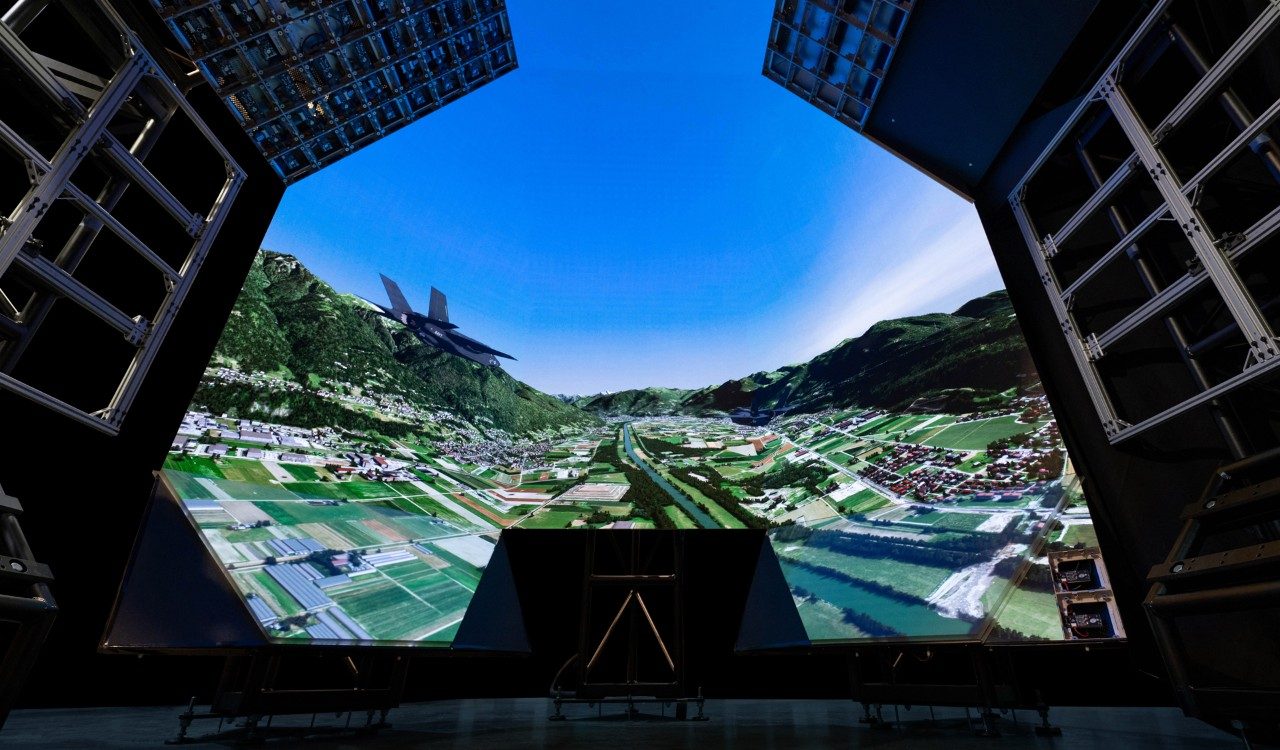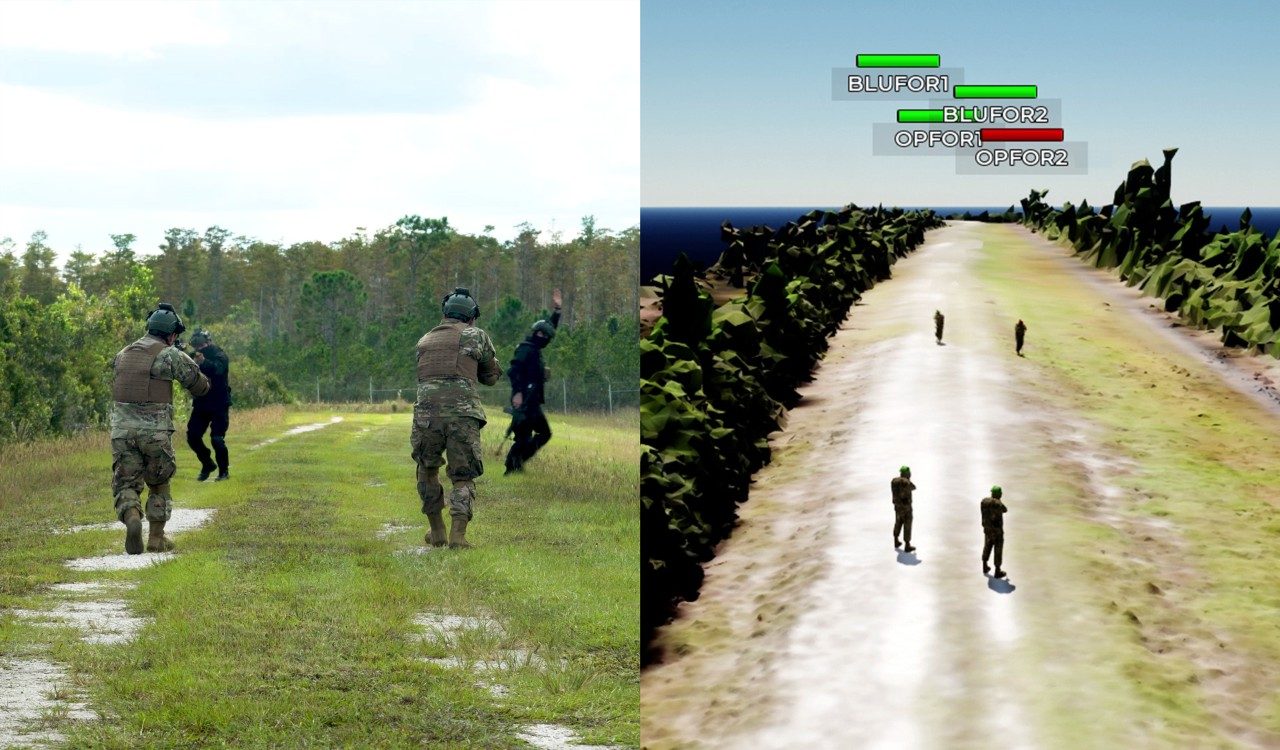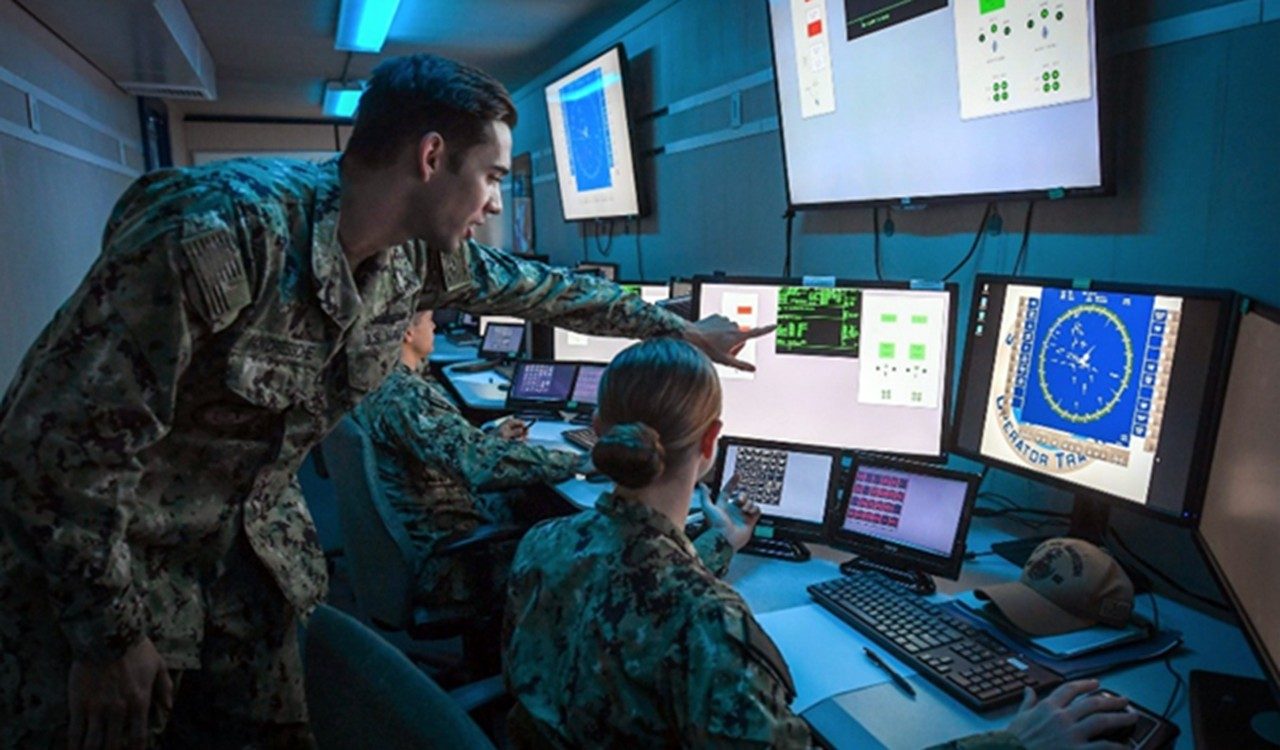Meeting Military Training Needs in the Metaverse
As complex global security threats are constantly evolving, so is the fully immersive virtual world of the metaverse. So why not use one to solve the other?
Lockheed Martin is increasing training and simulation realism to ensure those we serve always stay ahead of ready. From futuristic training platforms with interactive cockpits to simulating opposing forces in wargaming exercises, customers can predict and prevent sooner.
The metaverse is enabling simulated battlespaces that are meeting diverse needs of militaries around the world.

Military Need #1: Immersive pilot training that is cost-effective and sustainable.
Solution: Lockheed Martin’s Amorphic Appearance Zero-Projector visual display system or AMAZE.
This “AMAZE” -ing new technology is reimagining the way customers can immerse themselves in high-fidelity training. AMAZE breaks the mold from projector-based systems to make training more realistic thanks to higher contrast and brightness displays.
Thanks to LED modules and a light relay, customers can focus on their strategic advantage rather than sustainment. That’s because AMAZE eliminates the need for a maintenance schedule, not to mention that it lowers the overall hardware footprint and lifecycle costs.
Military Need #2: The ability to train across a multi-domain environment.
Solution: Prepar3D®, Lockheed Martin’s flagship simulation and training software program.
With Prepar3D, militaries can create learning scenarios across aviation, maritime and ground domains in the virtual world. This is central to our 21st Century Security vision to enable a joint force across all domains.
Customers will find realism and customizability in Prepar3D’s open architecture. By integrating third-party and customer-generated content, threats can be outpaced as the landscape changes.
In this simulated environment, there is an extensive vehicle library that can even aid mixed reality training integration. Customers can immerse themselves in anything from a deep-sea submarine to an F-16, UH-60 Black Hawk and more.

Military Need #3: Non-laser live training technology without line-of-sight limitations.
Solution: SIMRES, Lockheed Martin’s groundbreaking solution to conducting force-on-force training.
This live, virtual, constructive, and gaming (LVC-G) simulation delivers a tailored solution to address many challenges with today’s laser-based systems. The problem is lasers don’t behave like actual ammunition, meaning they’re not the most realistic option.
But the SIMRES system uses sensors to track location and orientation of service members and weapons in the real world and maps them in a virtual simulation. The weapons, round types and physical environment are assigned attributes so that the system can accurately calculate ballistics and effects of firing events.
Think of it as real-life service member acting as avatars in a video game, through which all the calculations are conducted.
Military Need #4: The ability to replicate all necessary battlespaces.
Solution: Battle Staff Trainer (BST), Lockheed Martin’s proven wargaming and simulation solution.
What is the best way to successfully continue training and deploying armed forces? Enhancing the accuracy and realism of simulation.
The multi-domain operations capability of BST will allow militaries to solve for what the future holds and bring a variety of wargaming events to life.
Command and staff can learn to make smarter and faster decisions through realistic and customizable scenarios in this proven, validated training solution.

Military Need #5: Evaluate a range of cyber threats to major acquisition programs.
Solution: Cyber Defense Range and Readiness Training
This training will allow service members to operate resiliently in cyber-contested environments and provides support for surface, undersea and ground platforms of autonomous and crewed systems.
Hardening cyber systems, outfitting cyber warriors, and the dissemination of threat intelligence are a few ways customers can mature their cyber operations with this realistic training.
If you are interested in any of Lockheed Martin’s Training, Logistics, and Sustainment programs and want to learn more, head over to LockheedMartin.com/training.




